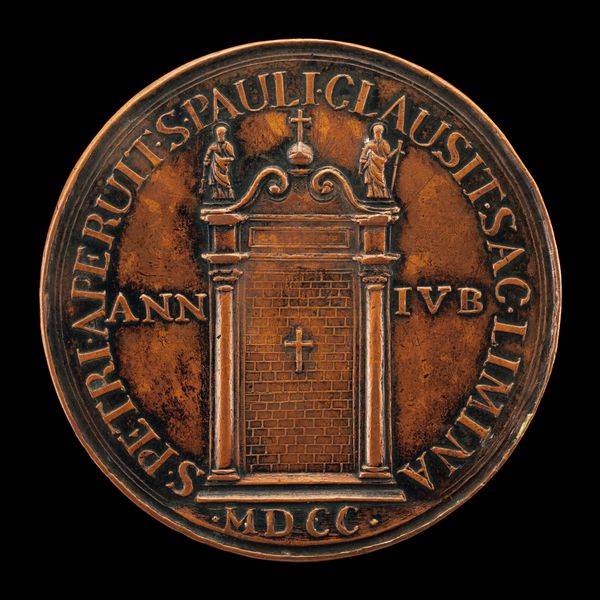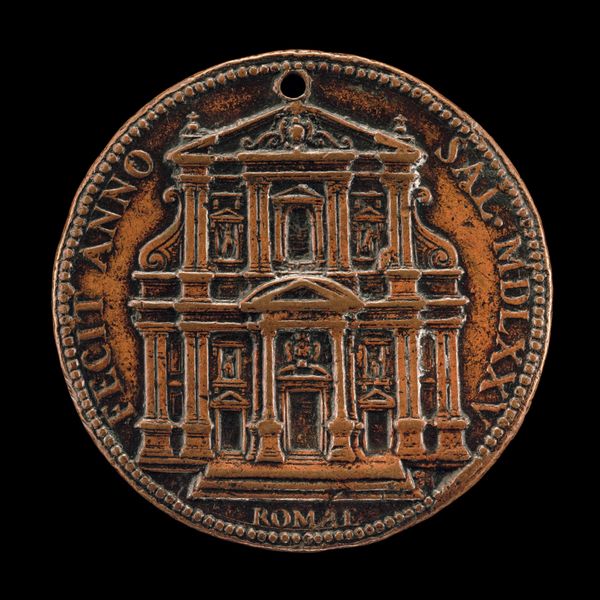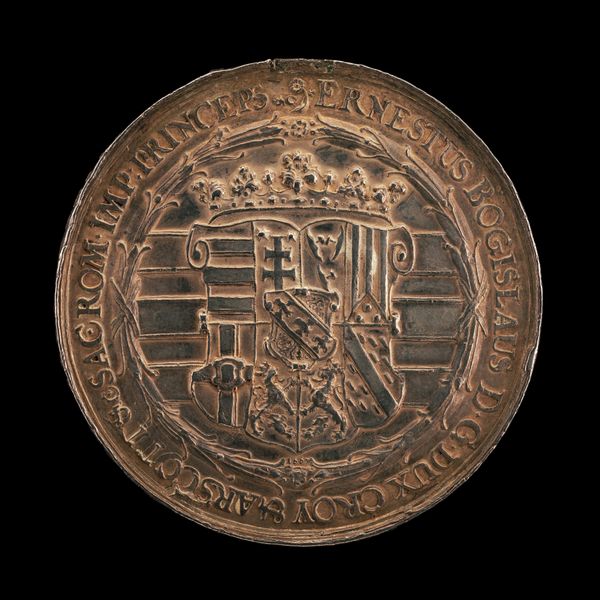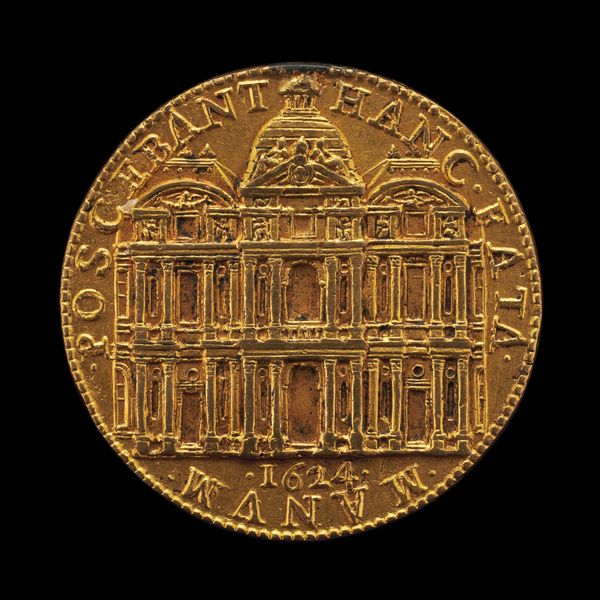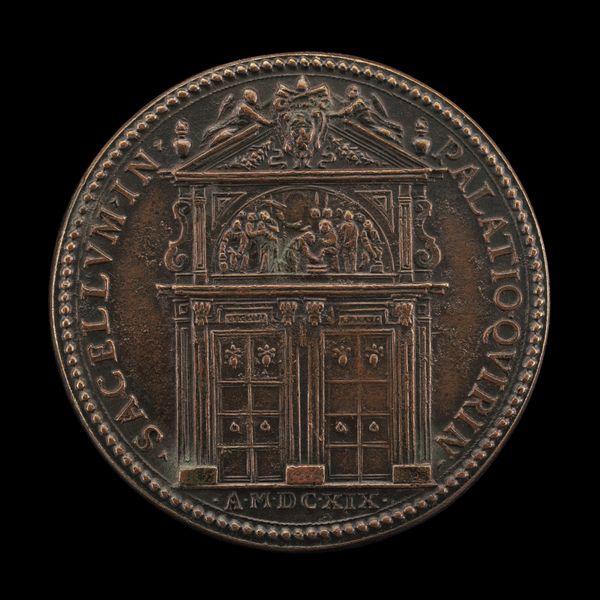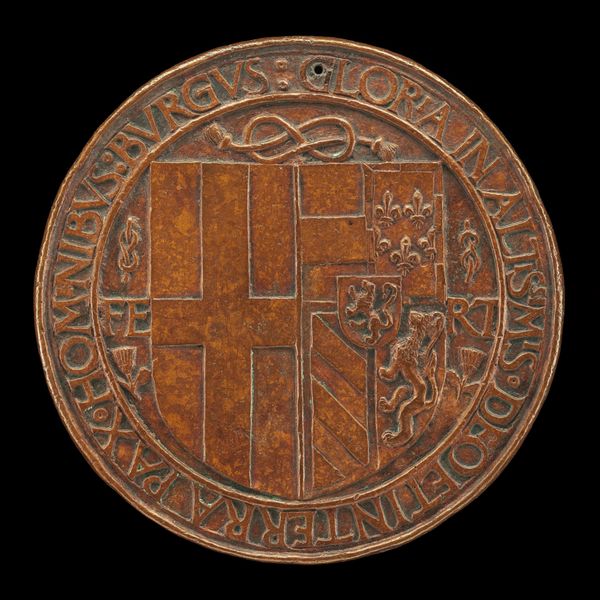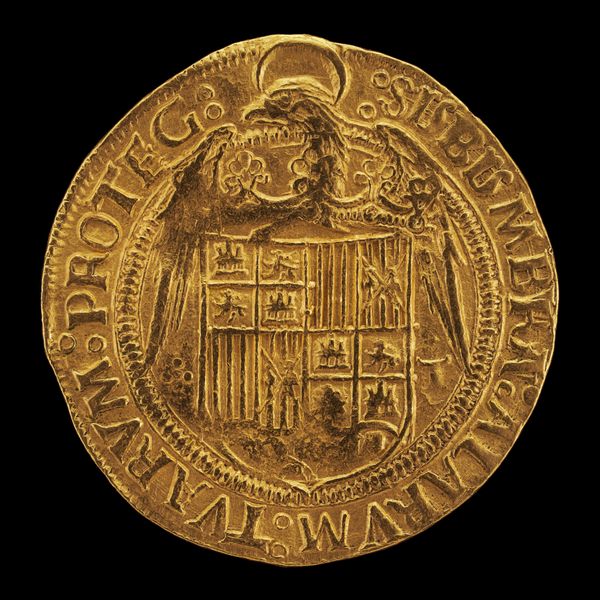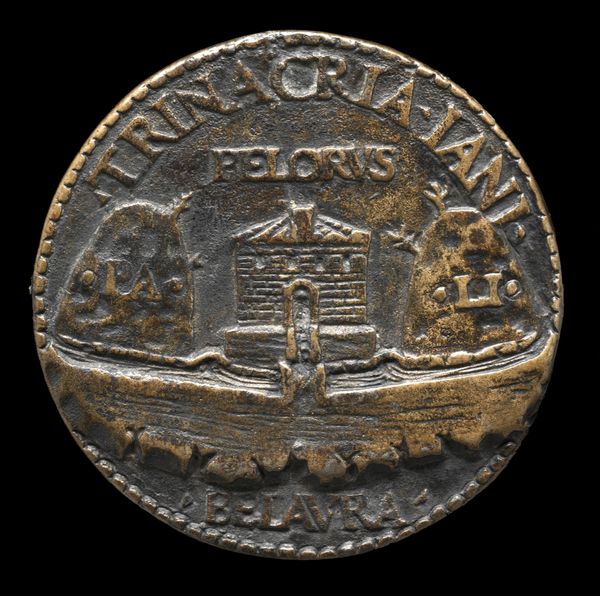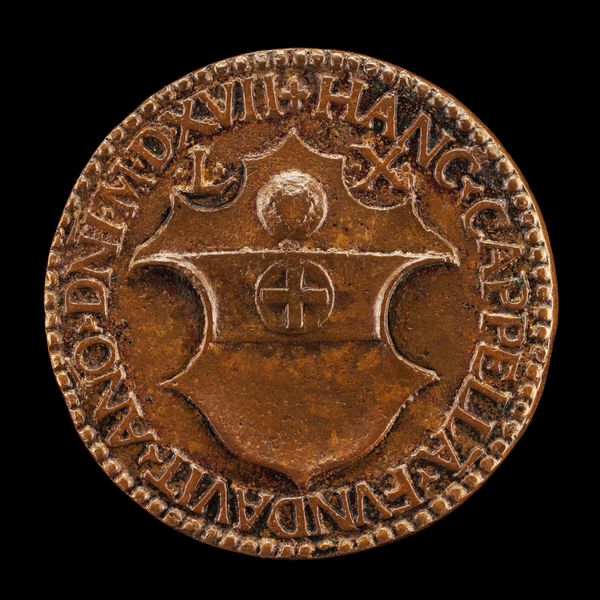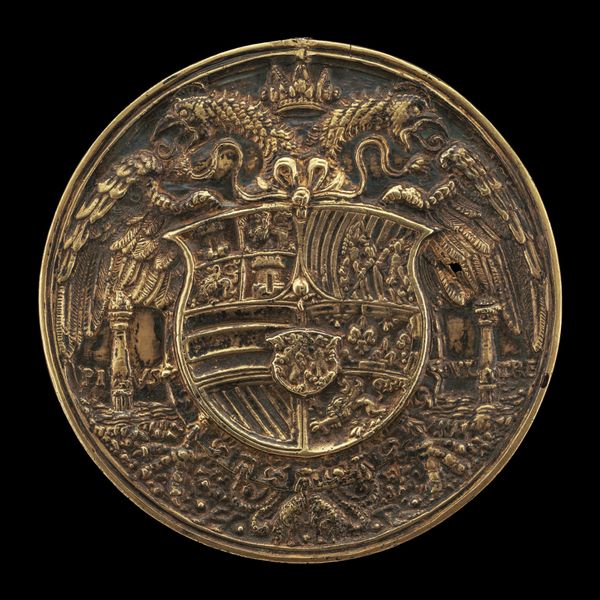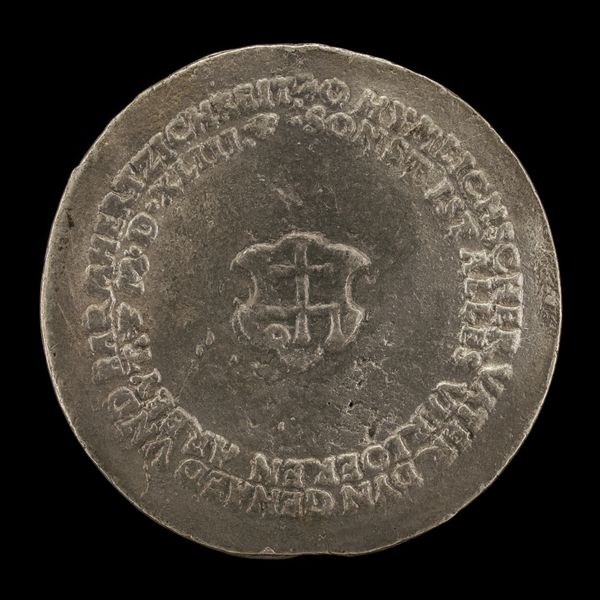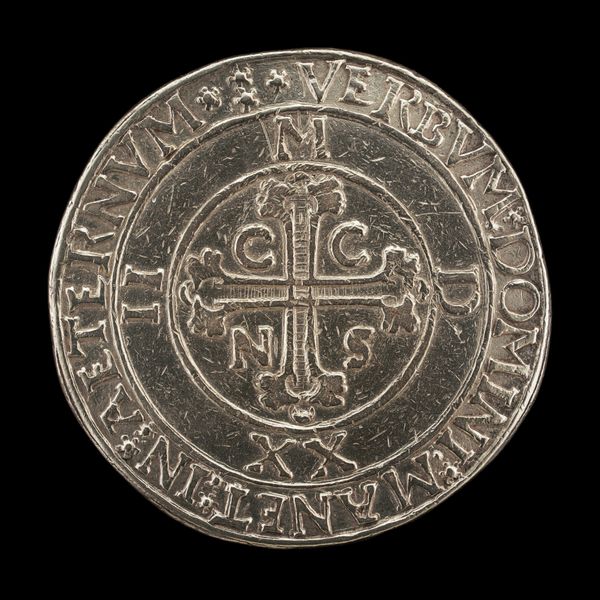![Facade of Santa Caterina dei Funari, Rome [reverse] by Giovan Federico Bonzagni](/_next/image?url=https%3A%2F%2Fd2w8kbdekdi1gv.cloudfront.net%2FeyJidWNrZXQiOiAiYXJ0ZXJhLWltYWdlcy1idWNrZXQiLCAia2V5IjogImFydHdvcmtzL2YyMTEyZmNkLTQwMzktNDU1NS1hOTQ3LWRmM2ZkMjEzOTMyOC9mMjExMmZjZC00MDM5LTQ1NTUtYTk0Ny1kZjNmZDIxMzkzMjhfZnVsbC5qcGciLCAiZWRpdHMiOiB7InJlc2l6ZSI6IHsid2lkdGgiOiAxOTIwLCAiaGVpZ2h0IjogMTkyMCwgImZpdCI6ICJpbnNpZGUifX19&w=3840&q=75)
Facade of Santa Caterina dei Funari, Rome [reverse] 1561
0:00
0:00
print, relief, bronze, sculpture, architecture
#
portrait
#
medal
# print
#
relief
#
bronze
#
mosaic
#
sculpture
#
history-painting
#
italian-renaissance
#
architecture
Dimensions: overall (diameter): 3.6 cm (1 3/8 in.) gross weight: 35.23 gr (0.078 lb.) axis: 6:00
Copyright: National Gallery of Art: CC0 1.0
Editor: Here we have Giovan Federico Bonzagni’s "Facade of Santa Caterina dei Funari, Rome [reverse]" from 1561. It appears to be a bronze medal depicting a church facade. It feels very formal and rigid. What statements about power dynamics and social structure might the artist be making through this imagery? Curator: This piece gives us insight into the way architecture and religious institutions were being represented and consumed during the Italian Renaissance. Have you considered the religious orders commissioning such works and their goals of expressing piety but also exerting authority? Editor: It's interesting you mention authority. The inscription around the building, "DIVAE CATHARINE TEMPLVM ANNO CHRISTI MDLXII", seems to further reinforce a specific religious narrative. Could you elaborate on how architectural depictions in art served ideological functions back then? Curator: Absolutely. The meticulous architectural detail, especially the symmetrical facade and the Latin inscription, positions the Church, and by extension the Papacy, as the center of not just religious, but also intellectual and civic life. What's the effect of its production in metal do you think? Does that speak to you in any way? Editor: I suppose the permanence of bronze gives an implicit sense of the Church's lasting influence. Does the fact that it is a print indicate popular accessibility, or was it a symbolic object mostly intended for the upper classes? Curator: It could indicate both! Prints allowed for wider circulation of imagery and ideas, which then played a part in shaping collective consciousness. At the same time, the choice of subject matter—a grand religious building—reflects the values and priorities of a society still heavily influenced by the Church. What did you make of the building’s namesake? Editor: The dedication to Saint Catherine provides a direct link to female religious figures within this structure of power, however. Now I see that Bonzagni's work might serve not just as a historical record but as a point of entry into conversations about religion, architecture, and representation. Curator: Exactly. And questioning the visual language, even on seemingly straightforward medals, is crucial to deconstructing the layers of power embedded within them.
Comments
No comments
Be the first to comment and join the conversation on the ultimate creative platform.
